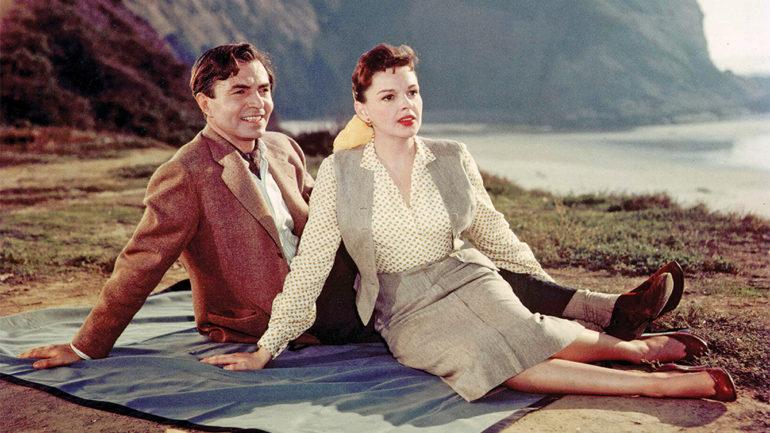The Story of ‘A Star Is Born’ Before Bradley Cooper’s Version
By Tim Gray
LOS ANGELES (Variety.com) – “A Star Is Born” has always been a great talent vehicle, including the new Bradley Cooper-Lady Gaga version, which Warner Bros. opened Oct. 5. Previous versions showcased big-name talent, but there’s also a stellar lineup of people who almost made the film but didn’t, including Cary Grant, Cher, Elvis Presley, Whitney Houston, Denzel Washington, Tom Cruise, Beyoncé Knowles and, behind the cameras, Mike Nichols, Quincy Jones and Clint Eastwood.
The new film is officially the fourth version, but it’s sort of the fifth. In 1932, RKO made “What Price Hollywood?” about an L.A. waitress who becomes a movie star while her alcoholic mentor declines. In the July 19, 1932, review, Variety shrugged, “It’s a fan magazine interpretation of Hollywood.” Five years later, Selznick Intl. Pictures’ “” had so many similarities that RKO considered suing.
Each version added an innovation: Technicolor in 1937, musical numbers for the 1954 Judy Garland film, then a setting switch to the music industry for Barbra Streisand in 1976. But some things never change: On Dec. 30, 1976, Variety’s Army Archerd noted that the top-grossing holiday films, including “Star,” were all sequels or remakes.
George Cukor directed the 1932 film, and said producer David O. Selznick took the subject of movie-making very seriously, even though Hollywood in those days was generally a target for spoofs, from Buster Keaton to Broadway’s Kaufman & Hart.
The film starred Constance Bennett and Lowell Sherman, and when Selznick left RKO in 1935 to start his own company, he brought along the concept of a rising newcomer and a fading veteran. That 1937 version was directed by William Wellman, with Fredric March and Janet Gaynor. Part of the film’s success was due to the new Technicolor process and the novelty of location work on such sites as Grauman’s Chinese Theater, Santa Anita racetrack and the Ambassador Hotel pool.
Variety on Nov. 30, 1936, reported that the movie was filming its key Academy Awards scene with 300 extras at the Biltmore Bowl, frequently the site of the actual awards ceremony. In the scene, Gaynor as Vicki Lester is presented an Oscar and, according to Variety, “Miss Gaynor is using her own gold statuette, won for ‘7th Heaven,’ ‘Street Angel’ and ‘Sunrise.’” (When she won at a 1929 event, actors were eligible for their body of work during the entire year.)
In 1952, and husband Sid Luft began signing creatives, including scripter Moss Hart and songwriters Harold Arlen and Ira Gershwin. Then they signed director Cukor (doing a variation of his 1932 work), and the final piece of the puzzle was the leading man. Variety reported in the following weeks that Garland was targeting Cary Grant, then Dana Andrews, Henry Fonda, then Stewart Granger. Also briefly considered were Richard Burton and Burt Lancaster, but James Mason eventually landed the role.
Garland and Luft also considered 3D, which was hitting its (brief) pinnacle then. The movie was eventually filmed in WarnerSuperScope.
In a 1976 essay called “Gone Hollywood,” writer John Gregory Dunne discussed the birth of the Streisand version. He said that in 1973, he came up with the idea of a musical remake centered in the rock world. He admitted that he and his wife/co-scripter Joan Didion had never seen any of the film versions, but were using the title as a peg to write about the rock-’n’-roll lifestyle; he envisioned as stars Carly Simon and James Taylor, who were then married, and then . Their first choice to direct was Warren Beatty; second choice was Mike Nichols.
After a year of writing, the two were tired of the project and ready to drop out until Streisand got involved. Dunne said the entire saga involved “three drafts, an arbitration, a threatened breach-of-contract suit and a sizable legal settlement for agreeing not to file that suit.” He added that eight of the 13 writers who worked on the script filed for credit, but the WGA arbitration decided on Didion and Dunne, and Frank Pierson (who also directed).
Streisand wooed Elvis Presley and Marlon Brando, but the film eventually starred Kris Kristofferson, and it ended up more about pop music than rock.
In the 1990s, Jones planned to produce a redo with Houston and Washington, which never happened. But the project was always under consideration by various individuals, and on Aug. 17, 2012, Variety reported that Eastwood and his producing partner Robert Lorenz would do a new version starring Knowles; they were in talks with Christian Bale, then Cruise, then . Two years later, Variety reported that Eastwood finally dropped out of a project “that became mired in endless delays and false starts.”
But Cooper stuck with it.

